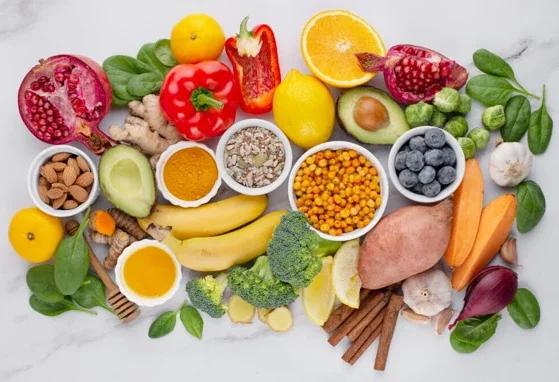The Department of Health to ban trans fat from South African foods
4 min read
/
Nutrition Health & Wellness

The Government Gazette of 30 March 2010 sets out Reg. 249 of the Foodstuffs, Cosmetics and Disinfectants Act (54/1972): Regulations: Trans fat in foodstuffs, prohibits a trans fat content in excess of 2g per 100g of end product foodstuff. Products that claim to be "free of trans fat" must contain less than (or equal to) 0.01g per 100g of the end product foodstuff.
There will be a six-month grace period to comply with the new laws once promulgated.
Unsaturated fatty acids can be in one of two shapes — "cis" and "trans." These terms refer to the physical positioning of hydrogen atoms around the carbon chain. The cis form is more common than the trans form. Trans-fatty acids (TFA) are found in small amounts in various animal products such as beef, pork, lamb and the butterfat in butter and milk.
TFA are also formed during the process of hydrogenation, making margarine, shortening, cooking oils and the foods made from them a major source of TFA in the American diet. Partially hydrogenated vegetable oils provide about three-fourths of the TFA in the U.S. diet. The trans fat content of foods is printed on the package of the Nutrition Facts label. Keep trans fat intake to less than 1 percent of total calories. For example, if you need 2,000 calories a day, you should consume less than 2 grams of trans fat.
Trans-fatty acids are also formed during the process of hydrogenation. "Hydrogenate" means to add hydrogen. When unsaturated fatty acids are hydrogenated, some of the hydrogen atoms are added on opposite sides of the molecule to the already attached hydrogen. Cis double bonds convert to trans double bonds, and the fatty acids become saturated
In clinical studies, TFA or hydrogenated fats tended to raise total blood cholesterol levels. Some scientists believe they raise cholesterol levels more than saturated fats. TFA also tend to raise LDL (bad) cholesterol and lower HDL (good) cholesterol when used instead of cis fatty acids or natural oils. These changes may increase the risk of heart disease.
Because there are no standard methods, it's difficult to estimate the TFA content of food items. It's also difficult to estimate intake, especially long-term intake. The four most important sources of TFA in one large group of women studied included margarine; beef, pork or lamb as the main dish; cookies (biscuits); and white bread.
As of January 2006, the FDA requires trans fat to be listed on the nutrition label. Although changes in labeling are important, they aren't enough. Many fast foods contain high levels of TFA. There are no labeling regulations for fast food, and it can even be advertised as cholesterol-free and cooked in vegetable oil. Eating one doughnut at breakfast (3.2 g of TFA) and a large order of french fries at lunch (6.8 g of TFA) add 10 grams of TFA to one's diet, so the lack of regulations for labeling restaurant foods can be harmful to your health
Based on current data, the American Heart Association recommends that consumers follow these tips:
Choose a diet rich in fruits, vegetables, whole-grain, high-fiber foods, and fat-free and low-fat dairy most often.
Keep total fat intake between 25 and 35 percent of calories, with most fats coming from sources of monounsaturated and polyunsaturated fats such as fish, nuts, seeds and vegetable oils most often.
Use naturally occurring, unhydrogenated vegetable oils such as canola, safflower, sunflower or olive oil most often.
Look for processed foods made with unhydrogenated oil rather than partially hydrogenated or hydrogenated vegetable oils or saturated fat.
Use soft margarine as a substitute for butter, and choose soft margarines (liquid or tub varieties) over harder stick forms. Look for ”0 g trans fat” on the Nutrition Facts label.
French fries, doughnuts, cookies, crackers, muffins, pies and cakes are examples of foods that are high in trans fat. Don't eat them often.
Limit the saturated fat in your diet. If you don't eat a lot of saturated fat, you won't be consuming a lot of trans fat.
Limit commercially fried foods and baked goods made with shortening or partially hydrogenated vegetable oils. Not only are these foods very high in fat, but that fat is also likely to be very hydrogenated, meaning a lot of trans fat.
Limited fried fast food. Commercial shortening and deep-frying fats will continue to be made by hydrogenation and will contain saturated fat and trans fat.
The regulations can be downloaded herehttp://www.doh.gov.za/department/foodcontrol/main.html
If you liked this post you may also like




